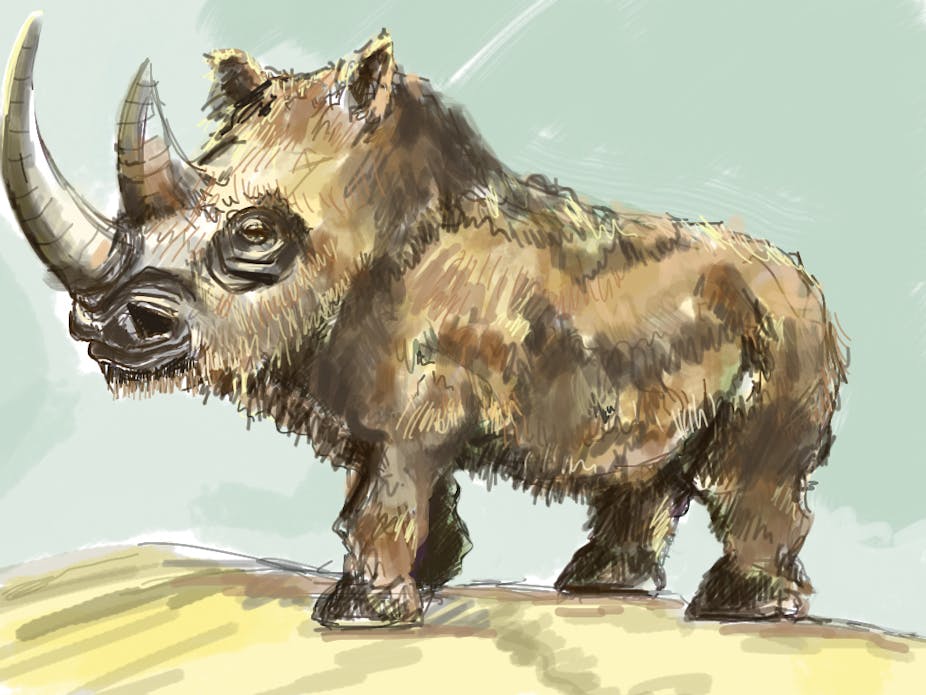Fossils from a new species of woolly rhinoceros found in Tibet have the potential to rock several cherished theories.
According to the authors of a new paper published today in Science, the rhino showed clear adaptations to a cold, snowy climate.
This suggests large-bodied mammals, or megafauna, evolved in Tibet before the beginning of the Ice Age.
If we accept the validity of this new species, the age of the fossils (3.7 million years) and its reconstructed phylogeny (the connections between all groups of organisms as understood by ancestor relationships), the implications are far-reaching.
A game changer?
The Science authors contend Coelondonta thibetana, as it’s now called, was a relatively primitive ancestor in the woolly rhino family tree.
This brings into question a seemingly widely-accepted notion about the Last Ice Age, or Last Glaciation Maximum (LGM). It goes like this:
As the Ice Age intensified, global mean temperature dropped across the world while ice sheets of a continental scale grew and crept towards the tropics.
The extreme cold conditions in the northern polar high latitudes meant it was too cold for most, if not all, species to remain there.
And so they were naturally driven to migrate out of the north polar regions towards the tropics.
It’s believed that during the LGM, global sea levels dropped massively and the global climate became arid and dry.
The new discovery from Tibet clearly challenges this idea and suggests the exact opposite regarding the migration direction of megafauna during the LGM.
Rocking the cradle
Extrapolating a step further, we could make a very generalised observation that would challenge a long-held belief among many evolutionary biologists that the tropics are the cradle of life – another theory, which goes like this:
Life originated in Earth’s warm tropical zones, and that warmth is associated with higher energy and a higher mutation rate. Species, according to this school of thought, then migrated gradually towards higher latitudes.
But wait … The historical distribution patterns of the woolly rhino, as demonstrated in the Science article, suggest this megaherbivore group evolved in high-altitude (more than 5,000m) mountain tops of the Himalayas, then migrated northwards into lower altitude (but higher latitude) areas as the Ice Age loomed.
One could therefore reason that not all life forms originated in the warm tropics.
Sweet retreat
The discovery also has implications for our understanding of the way species respond to major global climate change.
The authors seem to suggest that, during the early stages of global cooling, high-altitude mountain tops in low-latitude tropical regions may have formed centres of origin (at least for some species).
Using the Tibetan yak as an example, they allude to the fact that, since the Last Ice Age, many megafauna species that originated in high Tibet and later migrated to the northern high latitudes (but lower altitudes) had mostly become extinct.
But Tibetan yak still survive. The pattern of extinction in the wake of the Last Ice Age seems to suggest some megafauna species actually managed to retreat back to the place from where they originated.
In other words, the woolly rhino could well have left, then gone back to, the high-altitude Himalayas.
The new woolly rhino represents a paradox as far as the origin of Ice Age megafauna is concerned.
Having reared its head, it will no doubt cause more consternation than comfort for evolutionary biologists.

